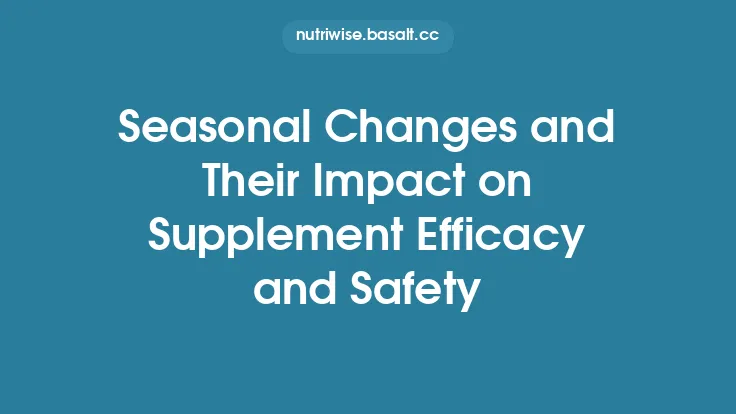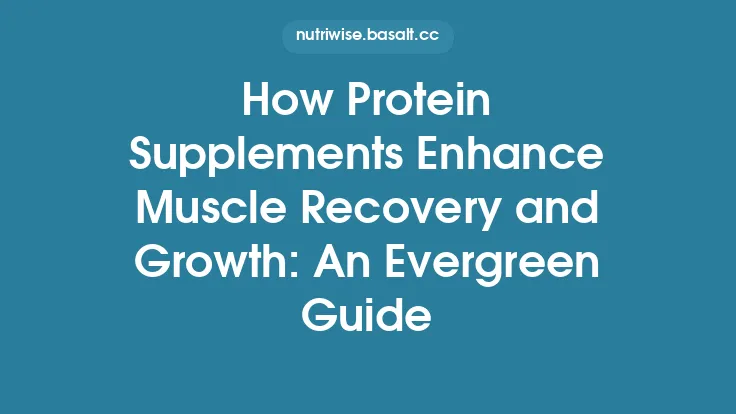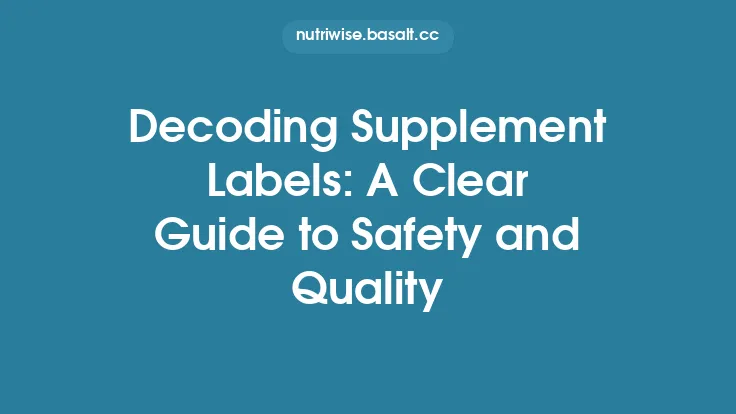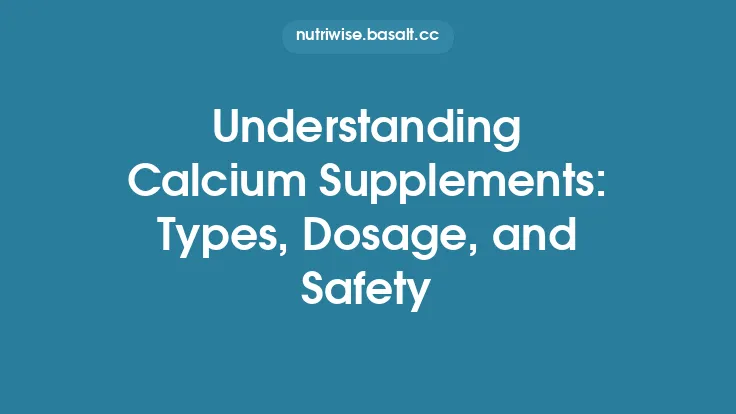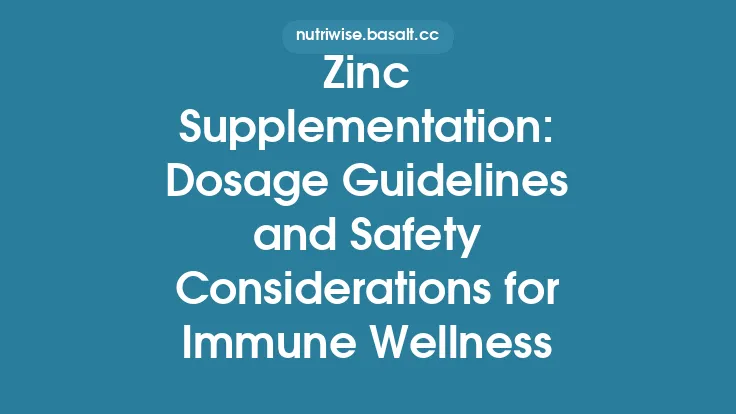The supplement market is dynamic, driven not only by consumer trends and scientific discoveries but also by a constantly shifting regulatory environment. When lawmakers, health agencies, or international bodies amend rules governing dietary supplements, the ripple effects can be felt across the entire supply chain—from ingredient sourcing and manufacturing to the information that reaches the shopper’s hands. Understanding how these regulatory changes influence supplement safety is essential for anyone who relies on these products for health and wellness. By staying informed, consumers can make choices that align with the most current safety standards, while manufacturers can adapt processes to remain compliant and protect public health.
Why the Regulatory Landscape Directly Affects Safety
Regulations serve as the backbone for safety assurance. They define what ingredients are permissible, set limits on dosages, outline manufacturing practices, and establish mechanisms for monitoring adverse events. When a regulation is tightened—such as imposing stricter limits on a particular botanical extract—the immediate effect is a reduction in the likelihood of overdosing or exposure to harmful contaminants. Conversely, a relaxation of rules (for example, expanding the list of “generally recognized as safe” substances) can introduce new risk vectors if the scientific evidence supporting safety is incomplete.
Safety is therefore not a static attribute of a supplement; it is a moving target that reflects the current state of regulatory oversight. Each amendment can:
- Alter the risk profile of existing products – A supplement that was previously compliant may become non‑compliant if a new maximum daily intake is introduced.
- Prompt reformulation – Manufacturers may need to replace or remove ingredients that fall out of favor, which can affect product efficacy and safety.
- Trigger enhanced monitoring – Updated reporting requirements can lead to faster detection of adverse events, allowing quicker corrective actions.
Key Regulatory Bodies and Their Evolving Roles
While the United States Food and Drug Administration (FDA) remains the primary authority for dietary supplements, several other agencies and international entities shape the safety landscape:
| Agency | Primary Mandate | Recent Evolution |
|---|---|---|
| FDA (Center for Food Safety and Applied Nutrition – CFSAN) | Oversees ingredient safety, labeling, and post‑market surveillance. | Expanded the Adverse Event Reporting System (AERS) to require more detailed data from manufacturers and health professionals. |
| Federal Trade Commission (FTC) | Regulates advertising claims to prevent deceptive marketing. | Introduced stricter guidelines for “structure‑function” claims, demanding substantiation with peer‑reviewed studies. |
| U.S. Department of Agriculture (USDA) | Governs organic certification, which can intersect with supplement sourcing. | Updated the National Organic Program (NOP) to include stricter standards for botanical extracts. |
| European Food Safety Authority (EFSA) | Provides scientific opinions for EU member states, influencing ingredient approvals. | Adopted a novel foods framework that now requires pre‑market safety assessments for many plant‑derived ingredients. |
| International Council for Harmonisation (ICH) | Facilitates global alignment of regulatory requirements. | Launched a working group on dietary supplement risk assessment, aiming to harmonize safety thresholds across regions. |
These bodies do not operate in isolation. Changes in one jurisdiction often cascade, prompting parallel adjustments elsewhere. For instance, EFSA’s decision to restrict a certain flavonoid’s daily intake prompted the FDA to review its own exposure limits, illustrating the interconnected nature of modern supplement regulation.
Recent Legislative Shifts and Their Safety Implications
1. The Dietary Supplement Transparency Act (Proposed, 2024)
- What it proposes: Mandatory public disclosure of all ingredient sources, manufacturing sites, and batch‑level testing results on a centralized online portal.
- Safety impact: By making detailed provenance data accessible, the act would empower consumers and health professionals to trace potential contamination events more rapidly, reducing the window of exposure.
2. Updated “New Dietary Ingredient” (NDI) Notification Requirements
- Change: The FDA extended the review period for NDIs from 75 to 120 days and introduced a requirement for in‑silico toxicology modeling as part of the submission.
- Safety impact: Longer review times allow for more thorough evaluation, while computational toxicology can flag potential hazards before human exposure, decreasing the likelihood of post‑market adverse events.
3. Strengthened “Structure‑Function” Claim Regulations
- Change: The FTC now requires that any claim linking a supplement to a physiological benefit be accompanied by a summary of the scientific evidence and a disclaimer that the claim is not an “intended use” under the Federal Food, Drug, and Cosmetic Act.
- Safety impact: This reduces the risk of consumers being misled into taking a product for a condition it has not been proven to affect, thereby avoiding inappropriate dosing or substitution for medical therapy.
4. Expansion of the Adverse Event Reporting System (AERS) 2.0
- Change: AERS 2.0 integrates electronic health record (EHR) data streams, enabling real‑time flagging of supplement‑related adverse events.
- Safety impact: Faster detection translates into quicker recalls or label updates, limiting the number of individuals exposed to potentially unsafe products.
How Post‑Market Surveillance Has Evolved
Post‑market surveillance is the safety net that catches issues missed during pre‑market evaluation. Recent enhancements include:
- Digital Traceability Platforms: Blockchain‑based systems now allow each supplement batch to be tracked from raw material to retail shelf. When an adverse event is reported, the specific batch can be identified instantly, facilitating targeted recalls.
- Crowdsourced Reporting Apps: Consumer‑focused mobile applications enable users to submit side‑effect reports directly to regulatory databases, increasing the volume and granularity of safety data.
- Artificial Intelligence (AI) Signal Detection: Machine‑learning algorithms scan social media, forums, and medical literature for emerging safety signals, flagging them for regulator review before they become widespread problems.
These tools collectively improve the speed and precision of safety interventions, but they also generate a wealth of data that can be overwhelming. Understanding how to interpret and act on this information is a key skill for both consumers and industry stakeholders.
Tools and Resources for Tracking Regulatory Updates
Staying current does not require a full‑time job in regulatory affairs. A combination of official sources, professional networks, and technology solutions can keep you well‑informed:
| Resource | What It Offers | How to Use It |
|---|---|---|
| FDA’s “Regulatory Information for Dietary Supplements” page | Official notices, guidance documents, and enforcement actions. | Subscribe to the RSS feed for instant updates. |
| Federal Register | Daily publication of proposed and final rules, including supplemental regulations. | Set up email alerts for keywords like “dietary supplement” or “new dietary ingredient.” |
| EU’s “Register of Nutrition and Health Claims” | Database of approved health claims and related scientific opinions. | Use the search function to verify claim legitimacy before purchase. |
| Professional Associations (e.g., Council for Responsible Nutrition, DSHEA Alliance) | Summaries of legislative developments, webinars, and white papers. | Join as a member to receive member‑only briefings and policy analyses. |
| RegTech Platforms (e.g., Compliance.ai, RegScan) | Automated monitoring of global regulatory changes with customizable dashboards. | Configure alerts for specific ingredient categories or geographic regions. |
| Scientific Literature Databases (PubMed, Scopus) | Peer‑reviewed studies that often precede regulatory action. | Set up “My NCBI” alerts for emerging safety data on popular supplement ingredients. |
By integrating at least two of these resources into a regular routine—such as a weekly email scan and a monthly deep‑dive webinar—you can maintain a robust awareness of the regulatory climate without being inundated.
Practical Steps Consumers Can Take to Stay Protected
- Verify Current Compliance Status
Before purchasing, check whether the product’s manufacturer has posted recent compliance documentation (e.g., NDI notifications, adverse event summaries). Many reputable brands host these files on their websites.
- Monitor Official Recall Lists
The FDA’s “Recall Enforcement Reports” and the European Commission’s “Rapid Alert System for Food and Feed (RASFF)” provide up‑to‑date information on recalled supplements. Set a quarterly reminder to review these lists.
- Leverage Digital Traceability Tools
If a brand offers a QR code or blockchain verification link on the label, scan it to confirm batch authenticity and view any safety notices attached to that specific production run.
- Stay Skeptical of Unsubstantiated Claims
Even with regulatory oversight, some marketing language can be borderline. Look for claims that are accompanied by references to peer‑reviewed research or official health claim approvals.
- Report Any Adverse Effects
Contribute to post‑market surveillance by submitting reports to the FDA’s MedWatch program or the EU’s “Safety Reporting Portal.” Your data can help trigger earlier safety actions.
- Consult Healthcare Professionals
When in doubt, discuss supplement use with a pharmacist, dietitian, or physician who can interpret the latest regulatory guidance in the context of your health profile.
Industry Adaptations to New Rules
Regulatory changes compel manufacturers to adopt several strategic adjustments:
- Ingredient Vetting Pipelines – Companies now employ dedicated regulatory affairs teams that conduct pre‑emptive safety assessments for emerging ingredients, often using in‑silico toxicology and literature reviews before any market entry.
- Dynamic Label Management Systems – Software platforms enable real‑time updates to product labels, ensuring that dosage limits, claim language, and warning statements remain compliant across all distribution channels.
- Enhanced Quality Management Systems (QMS) – While not a deep dive into GMP, modern QMS integrate risk‑based monitoring that aligns with new surveillance requirements, such as mandatory batch‑level testing data uploads.
- Cross‑Border Regulatory Harmonization Teams – Multinational firms maintain specialized units that track regulatory shifts in key markets (U.S., EU, Canada, Japan) and coordinate product reformulations to meet the most stringent standards, thereby simplifying global compliance.
These adaptations not only safeguard consumers but also reduce the risk of costly recalls and brand damage.
Future Directions and Emerging Technologies
Looking ahead, several trends are poised to reshape how regulatory changes influence supplement safety:
- Predictive Safety Modeling – Leveraging big data from genomics, metabolomics, and real‑world usage patterns, AI models can forecast potential adverse reactions before a product reaches the market, prompting pre‑emptive regulatory action.
- Regulatory Sandboxes – Some jurisdictions are experimenting with “sandbox” environments where innovative supplement formulations can be tested under relaxed but closely monitored conditions, accelerating scientific validation while maintaining safety oversight.
- Personalized Supplementation Platforms – As consumer genomics and microbiome testing become mainstream, regulators are beginning to draft guidance on individualized dosage recommendations, which will require new safety assessment frameworks.
- Global Data Sharing Consortia – International collaborations aim to create unified adverse event databases, allowing regulators to detect cross‑border safety signals more efficiently.
These developments suggest a future where safety assurance is increasingly proactive, data‑driven, and globally coordinated.
Bottom line: Regulatory changes are not abstract policy shifts; they are concrete levers that directly affect the safety of the supplements you consume. By actively monitoring official sources, leveraging technology, and adopting a cautious, evidence‑based approach to product selection, you can navigate this evolving landscape with confidence. Staying informed is the most reliable defense against potential hazards, ensuring that the benefits of dietary supplements are realized without compromising health.
